Occupation Journalist, author Spouse Sheila Wolfe Nationality American Name Tom Wolfe | Period 1959–present Role Author | |
 | ||
Notable works The Painted Word, The Electric Kool-Aid Acid Test, The Right Stuff, A Man in Full, radical chic & Mau-Mauing the Flak Catchers, The Bonfire of the Vanities, Back to Blood Awards Jefferson Lecture, Dos Passos Prize Books The Bonfire of the Vanities, The Electric Kool‑Aid, The Right Stuff, Back to Blood, A Man in Full Similar People Died May 14, 2018 (aged 88) New York City, New York, U.S. | ||
From 2006: Writer Tom Wolfe on journalism and voyeurism
Thomas Kennerly "Tom" Wolfe Jr. (born March 2, 1931) is an American author and journalist, best known for his association with and influence in stimulating the New Journalism literary movement, in which literary techniques are used extensively. He reduced traditional values of journalistic objectivity.
Contents
- From 2006 Writer Tom Wolfe on journalism and voyeurism
- Tom wolfe information compulsion live from the nypl
- Early life and education
- Journalism and New Journalism
- Non fiction books
- Art critiques
- Made for TV movie
- Novels
- Recurring themes
- White suit
- Views
- Personal life
- Influence
- Terms coined by Wolfe
- List of awards and nominations
- Television appearances
- References

He began his career as a regional newspaper reporter in the 1950s, but achieved national prominence in the 1960s following the publication of such best-selling books as The Electric Kool-Aid Acid Test (a highly experimental account of Ken Kesey and the Merry Pranksters), and two collections of articles and essays, radical chic & Mau-Mauing the Flak Catchers and The Kandy-Kolored Tangerine-Flake Streamline Baby.

His first novel, The Bonfire of the Vanities, published in 1987, was met with critical acclaim, and also became a commercial success. It was adapted as a major motion picture of the same name, directed by Brian De Palma. He has published three additional novels and other writing since then, becoming a major cultural figure.
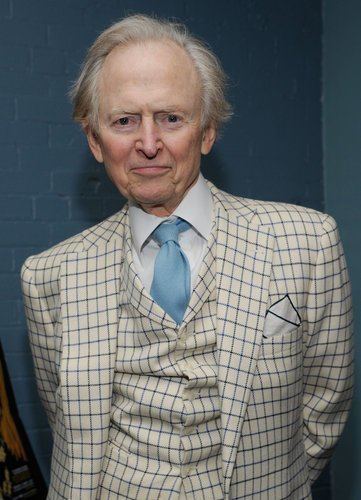
Tom wolfe information compulsion live from the nypl
Early life and education
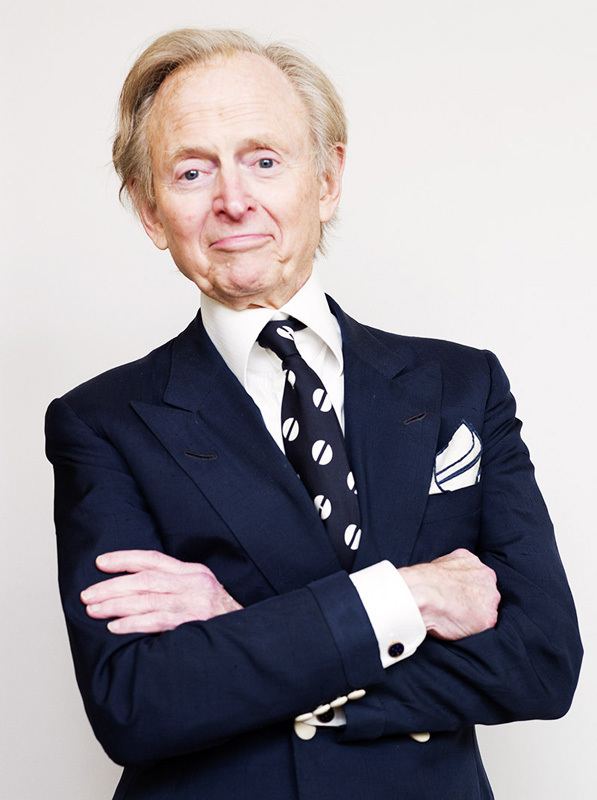
Wolfe was born in Richmond, Virginia, the son of Louise (née Agnew), a landscape designer, and Thomas Kennerly Wolfe Sr., an agronomist.
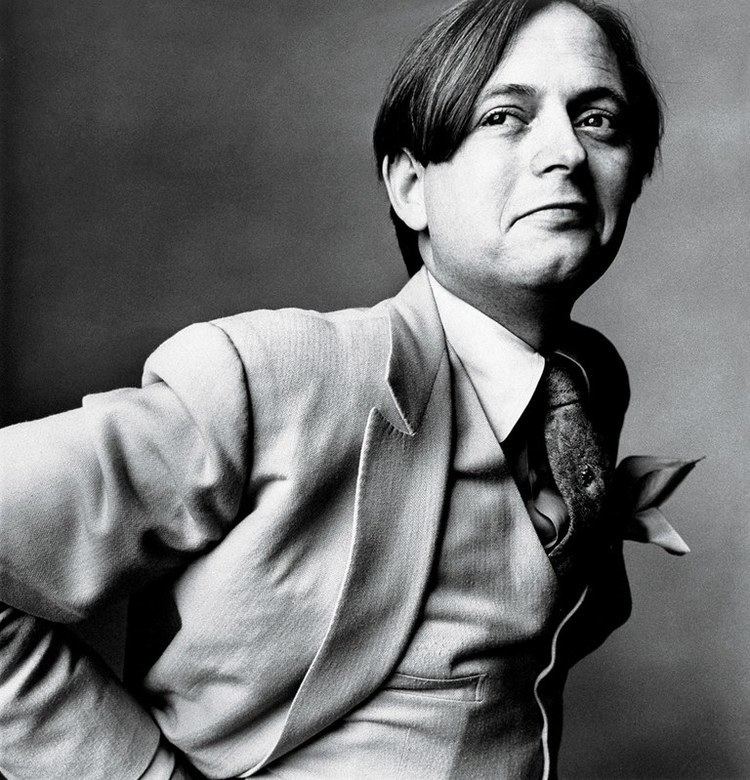
Wolfe grew up on Gloucester Road in the historic Richmond North Side neighborhood of Sherwood Park. He recounts childhood memories in a foreword to a book about the nearby historic Ginter Park neighborhood.
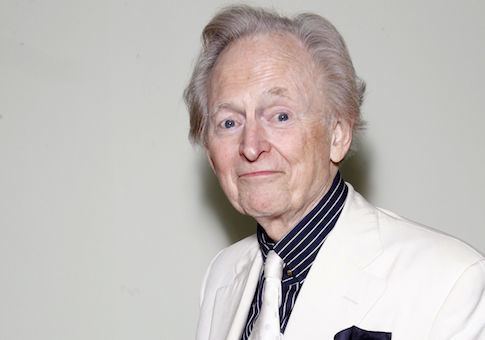
Wolfe was student council president, editor of the school newspaper, and a star baseball player at St. Christopher's School, an Episcopal all-boys school in Richmond.

Upon graduation in 1947, he turned down admission to Princeton University to attend Washington and Lee University, both all-male schools at the Time. At Washington and Lee, Wolfe was a member of the Phi Kappa Sigma fraternity. Wolfe majored in English and practiced his writing outside the classroom as well. He was the sports editor of the college newspaper and helped found a literary magazine, Shenandoah. Of particular influence was his professor Marshall Fishwick, a teacher of American studies educated at Yale. More in the tradition of anthropology than literary scholarship, Fishwick taught his classes to look at the whole of a culture, including those elements considered profane. Wolfe's undergraduate thesis, entitled "A Zoo Full of Zebras: Anti-Intellectualism in America," evinced his fondness for words and aspirations toward cultural criticism. Wolfe graduated cum laude in 1951.
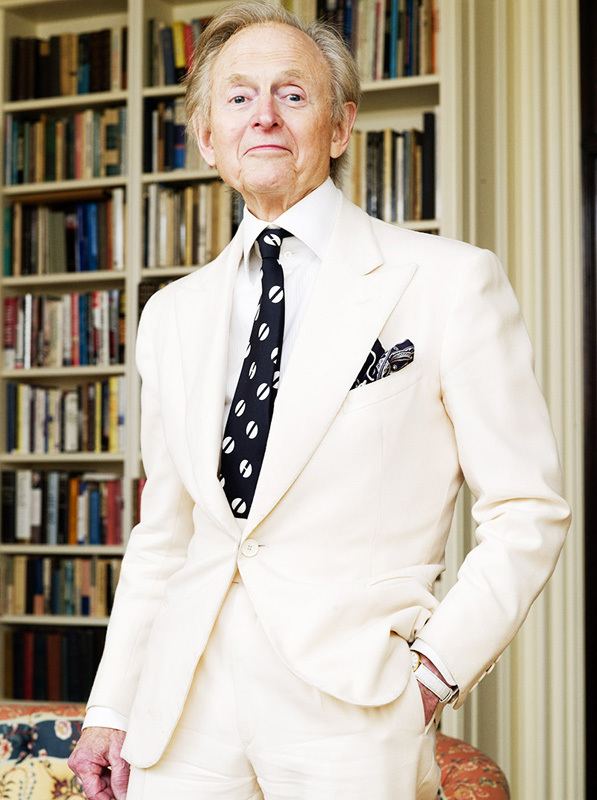
Wolfe had continued playing baseball as a pitcher and had begun to play semi-professionally while still in college. In 1952 he earned a tryout with the New York Giants but was cut after three days, which Wolfe blamed on his inability to throw good fastballs. Wolfe abandoned baseball and instead followed his professor Fishwick's example, enrolling in Yale University's American studies doctoral program. His PhD thesis was titled The League of American Writers: Communist Organizational Activity Among American Writers, 1929–1942. In the course of his research, Wolfe interviewed many writers, including Malcolm Cowley, Archibald MacLeish, and James T. Farrell. A biographer remarked on the thesis: "Reading it, one sees what has been the most baleful influence of graduate education on many who have suffered through it: it deadens all sense of style." His thesis was originally rejected but it was finally accepted after he rewrote it in an objective rather than a subjective style. Upon leaving Yale, he wrote a friend explaining through expletives his personal opinions about his thesis.
Journalism and New Journalism
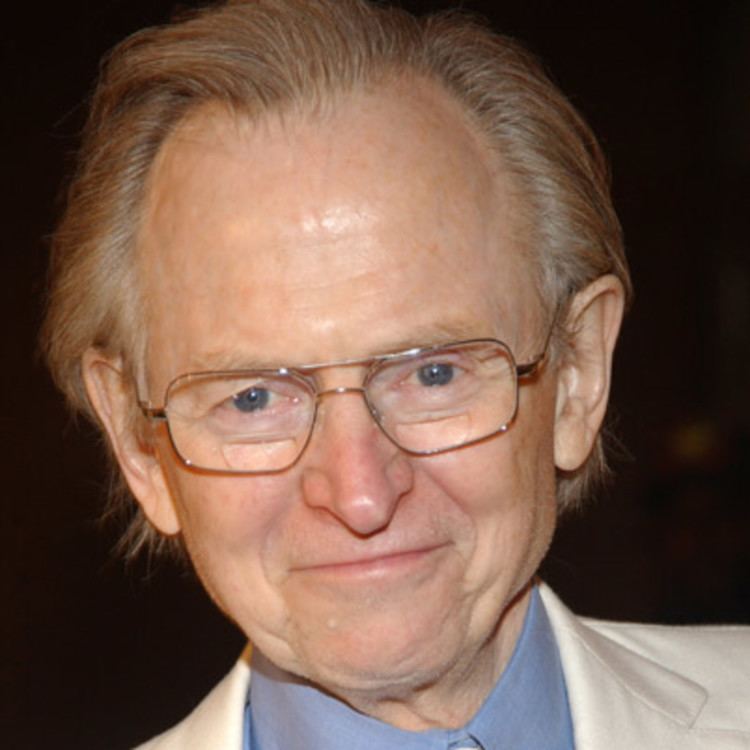
Though Wolfe was offered teaching jobs in academia, he opted to work as a reporter. In 1956, while still preparing his thesis, Wolfe became a reporter for the Springfield Union in Springfield, Massachusetts. Wolfe finished his thesis in 1957.
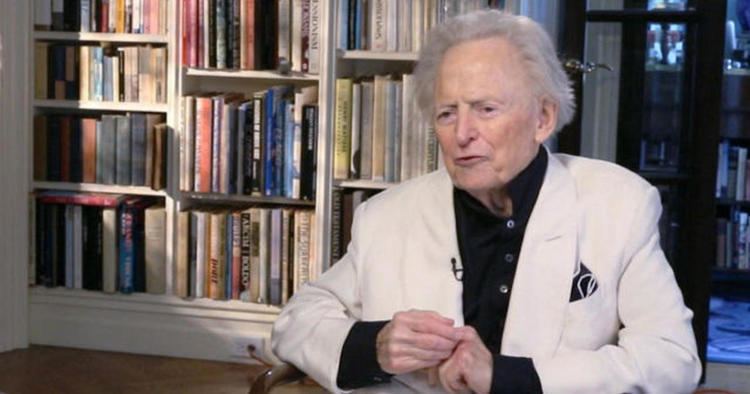
In 1959 he was hired by The Washington Post. Wolfe has said that part of the reason he was hired by the Post was his lack of interest in politics. The Post's city editor was "amazed that Wolfe preferred cityside to Capitol Hill, the beat every reporter wanted." He won an award from The Newspaper Guild for foreign reporting in Cuba in 1961 and also won the Guild's award for humor. While there, Wolfe experimented with fiction-writing techniques in feature stories.
In 1962, Wolfe left Washington for New York City, taking a position with the New York Herald Tribune as a general assignment reporter and feature writer. The editors of the Herald Tribune, including Clay Felker of the Sunday section supplement New York magazine, encouraged their writers to break the conventions of newspaper writing. During the 1962 New York City newspaper strike, Wolfe approached Esquire magazine about an article on the hot rod and custom car culture of southern California. He struggled with the article until his editor, Byron Dobell, suggested that Wolfe send him his notes so they could piece the story together.
Wolfe procrastinated. The evening before the deadline, he typed a letter to Dobell explaining what he wanted to say on the subject, ignoring all journalistic conventions. Dobell's response was to remove the salutation "Dear Byron" from the top of the letter and publish it intact as reportage. The result, published in 1963, was "There Goes (Varoom! Varoom!) That Kandy-Kolored Tangerine-Flake Streamline Baby." The article was widely discussed—loved by some, hated by others. Its notoriety helped Wolfe gain publication of his first book, The Kandy-Kolored Tangerine-Flake Streamline Baby, a collection of his writings from the Herald-Tribune, Esquire, and other publications.
This was what Wolfe called New Journalism, in which some journalists and essayists experimented with a variety of literary techniques, mixing them with the traditional ideal of dispassionate, even-handed reporting. Wolfe experimented with four literary devices not normally associated with feature writing: scene-by-scene construction, extensive dialogue, multiple points of view, and detailed description of individuals' status-life symbols (the material choices people make) in writing this stylized form of journalism. He later referred to this style as literary journalism. Of the use of status symbols, Wolfe has said, "I think every living moment of a human being’s life, unless the person is starving or in immediate danger of death in some other way, is controlled by a concern for status."
Wolfe also championed what he called “saturation reporting,” a reportorial approach in which the journalist “shadows” and observes the subject over an extended period of time. “To pull it off,” says Wolfe, “you casually have to stay with the people you are writing about for long stretches . . . long enough so that you are actually there when revealing scenes take place in their lives.” Saturation reporting differs from “in-depth” and “investigative” reporting, which involve the direct interviewing of numerous sources and/or the extensive analyzing of external documents relating to the story. Saturation reporting, according to communication professor Richard Kallan, “entails a more complex set of relationships wherein the journalist becomes an involved, more fully reactive witness, no longer distanced and detached from the people and events reported.”
Wolfe's The Electric Kool-Aid Acid Test is considered a striking example of New Journalism. This account of the Merry Pranksters, a famous sixties counter-culture group, was highly experimental in Wolfe's use of onomatopoeia, free association, and eccentric punctuation—such as multiple exclamation marks and italics—to convey the manic ideas and personalities of Ken Kesey and his followers.
In addition to his own work, Wolfe edited a collection of New Journalism with E.W. Johnson, published in 1973 and titled The New Journalism. This book published pieces by Truman Capote, Hunter S. Thompson, Norman Mailer, Gay Talese, Joan Didion, and several other well-known writers, with the common theme of journalism that incorporated literary techniques and that could be considered literature.
Non-fiction books
In 1965, Wolfe published a collection of his articles in this style, The Kandy-Kolored Tangerine-Flake Streamline Baby, adding to his notability. He published a second collection of articles, The Pump House Gang, in 1968. Wolfe wrote on popular culture, architecture, politics, and other topics that underscored, among other things, how American life in the 1960s had been transformed by post-WWII economic prosperity. His defining work from this era is The Electric Kool-Aid Acid Test (published the same day as The Pump House Gang in 1968), which for many epitomized the 1960s. Although a conservative in many ways (in 2008, he claimed never to have used LSD and to have tried marijuana only once) Wolfe became one of the notable figures of the decade.
In 1970, he published two essays in book form as Radical Chic & Mau-Mauing the Flak Catchers. "Radical Chic" was a biting account of a party given by composer and conductor Leonard Bernstein to raise money for the Black Panther Party. "Mau-Mauing The Flak Catchers" was about the practice by some African Americans of using racial intimidation ("mau-mauing") to extract funds from government welfare bureaucrats ("flak catchers"). Wolfe's phrase, "radical chic", soon became a popular derogatory term for critics to apply to upper-class leftism. His Mauve Gloves & Madmen, Clutter & Vine (1977) included Wolfe's noted essay, "The Me Decade and the Third Great Awakening."
In 1979, Wolfe published The Right Stuff, an account of the pilots who became America's first astronauts. Following their training and unofficial, even foolhardy, exploits, he likened these heroes to "single combat champions" of a bygone era, going forth to battle in the Space Race on behalf of their country. In 1983, the book was adapted as a successful feature film.
In 2016 Wolfe published The Kingdom of Speech, a controversial critique of the work of Charles Darwin and Noam Chomsky. His take on how humans developed speech was described as opinionated and not supported by research.
Art critiques
Wolfe also wrote two critiques of and social histories of modern art and modern architecture, The Painted Word and From Bauhaus to Our House, published in 1975 and 1981, respectively. The Painted Word mocked the excessive insularity of the art world and its dependence on what he saw as faddish critical theory. In From Bauhaus to Our House he explored what he said were the negative effects of the Bauhaus style on the evolution of modern architecture.
Made for TV movie
In 1977 PBS produced Tom Wolfe's Los Angeles, a fictional, satirical TV movie set in Los Angeles. Wolfe appears in the movie as himself.
Novels
Throughout his early career, Wolfe had planned to write a novel to capture the wide reach of American society. Among his models was William Makepeace Thackeray's Vanity Fair, which described the society of 19th-century England. In 1981, he ceased his other work to concentrate on the novel.
Wolfe began researching the novel by observing cases at the Manhattan Criminal Court and shadowing members of The Bronx homicide squad. While the research came easily, he encountered difficulty in writing. To overcome his writer's block, Wolfe wrote to Jann Wenner, editor of Rolling Stone, to propose an idea drawn from Charles Dickens and Thackeray: to serialize his novel. Wenner offered Wolfe around $200,000 to serialize his work. The frequent deadline pressure gave him the motivation he had hoped for, and from July 1984 to August 1985, he published a new installment in each biweekly issue of Rolling Stone.
Later Wolfe was unhappy with his "very public first draft" and thoroughly revised his work, even changing his protagonist Sherman McCoy. Wolfe had originally made him a writer but recast him as a bond salesman. Wolfe researched and revised for two years, and his The Bonfire of the Vanities was published in 1987. The book was a commercial and critical success, spending weeks on bestseller lists and earning praise from the very literary establishment on which Wolfe had long heaped scorn.
Because of the success of Wolfe's first novel, there was widespread interest in his second. This novel took him more than 11 years to complete; A Man in Full was published in 1998. The book's reception was not universally favorable, though it received glowing reviews in Time, Newsweek, The Wall Street Journal, and elsewhere. An initial printing of 1.2 million copies was announced and the book stayed at number one on the New York Times bestseller list for ten weeks. Noted author John Updike wrote a critical review for The New Yorker, complaining that the novel "amounts to entertainment, not literature, even literature in a modest aspirant form." His comments sparked an intense war of words in the print and broadcast media among Wolfe and Updike, and authors John Irving and Norman Mailer, who also entered the fray.
In 2001, Wolfe published an essay referring to these three authors as "My Three Stooges." That year he also published Hooking Up (a collection of short pieces, including the 1997 novella Ambush at Fort Bragg). ,
He published his third novel, I Am Charlotte Simmons (2004), chronicling the decline of a poor, bright scholarship student from Alleghany County, North Carolina, after attending an elite university. He conveys an institution filled with snobbery, materialism, anti-intellectualism, and sexual promiscuity. The novel met with a mostly tepid response by critics. Many social conservatives praised it in the belief that its portrayal revealed widespread moral decline. The novel won a Bad Sex in Fiction Award from the London-based Literary Review, a prize established "to draw attention to the crude, tasteless, often perfunctory use of redundant passages of sexual description in the modern novel". Wolfe later explained that such sexual references were deliberately clinical.
Wolfe has written that his goal in writing fiction is to document contemporary society in the tradition of John Steinbeck, Charles Dickens, and Émile Zola.
Wolfe announced in early 2008 that he was leaving his longtime publisher, Farrar, Straus and Giroux. His fourth novel, Back to Blood, was published in October 2012 by Little, Brown. According to The New York Times, Wolfe was paid close to US$7 million for the book. According to the publisher, Back to Blood is about "class, family, wealth, race, crime, sex, corruption and ambition in Miami, the city where America's future has arrived first."
Recurring themes
Wolfe revisits particular themes in both his non-fiction writing and novels. He explores male power-jockeying, in The Bonfire of the Vanities, A Man in Full, and I Am Charlotte Simmons, as well as several of his journalistic pieces. Male characters in his fiction often suffer from feelings of extreme inadequacy or hugely inflated egos, sometimes alternating between both.
He satirizes racial politics, most commonly between whites and blacks; he also highlights class divisions between characters. He describes men's fashions to indicate economic status.
Much of his recent work also addresses neuroscience. He notes his fascination in "Sorry, Your Soul Just Died," one of the essays in Hooking Up. This topic is also featured in I Am Charlotte Simmons, as the title character is a student of neuroscience. Wolfe describes the characters' thought and emotional processes, such as fear, humiliation and lust, in the clinical terminology of brain chemistry. Wolfe also frequently gives detailed descriptions of various aspects of his characters' anatomies.
Two of his novels (A Man in Full and I Am Charlotte Simmons) feature major characters (Conrad Hensley and Jojo Johanssen, respectively) who begin paths to self-discovery by reading classical Roman and Greek philosophy.
Wolfe names law and banking firms satirically, formed by the surnames of the partners. For instance, "Dunning, Sponget and Leach" and "Curry, Goad and Pesterall" appear in The Bonfire of the Vanities, and "Wringer, Fleasom and Tick" in A Man in Full. Ambush at Fort Bragg contains a law firm called "Crotalus, Adder, Cobran and Krate" (all names or homophones of venomous snakes).
Some characters appear in multiple novels, creating a sense of a "universe" that is continuous throughout Wolfe's fiction. The character of Freddy Button, a lawyer from Bonfire of the Vanities, is mentioned briefly in I Am Charlotte Simmons. A character named Ronald Vine, an interior decorator who is mentioned in The Bonfire of the Vanities, reappears in A Man in Full as the designer of Charlie Croker's home.
He describes a fictional sexual practice, called "that thing with the cup", both in novels and a non-fiction essay in Hooking Up.
White suit
Wolfe adopted wearing a white suit as a trademark in 1962. He bought his first white suit planning to wear it in the summer, in the style of Southern gentlemen. However, he found that the suit he purchased was too heavy for summer use, so he wore it in winter, which created a sensation. At the time, white suits were supposed to be reserved for summer wear. Wolfe has maintained this as a uniform ever since. He sometimes accompanies it with a white tie, white homburg hat, and two-tone shoes. Wolfe has said that the outfit disarms the people he observes, making him, in their eyes, "a man from Mars, the man who didn't know anything and was eager to know."
Views
In 1989, Wolfe wrote an essay for Harper's Magazine titled "Stalking the Billion-Footed Beast". It criticized modern American novelists for failing to engage fully with their subjects, and suggested that modern literature could be saved by a greater reliance on journalistic technique. This attack on the mainstream literary establishment was interpreted as a boast that Wolfe's work was superior to that of more highly regarded authors.
Wolfe supported George W. Bush as a political candidate and said he voted for him for president in 2004 because of what he called Bush's "great decisiveness and willingness to fight." (Bush apparently reciprocates the admiration, and is said to have read all of Wolfe's books, according to friends in 2005). ) After his support of Bush was publicized in a New York Times interview, Wolfe said that the reaction in the literary world was as if he had said, "I forgot to tell you—I'm a child molester." Because of this incident, he sometimes wears an American flag pin on his suit, which he compared to "holding up a cross to werewolves."
Wolfe's views and choice of subject material, such as mocking left-wing intellectuals in Radical Chic and glorifying astronauts in The Right Stuff, have sometimes resulted in his being labeled conservative. Due to his depiction of the Black Panther Party in Radical Chic, a member of the party called him a racist. Wolfe rejects such labels. In a 2004 interview in The Guardian, he said that his "idol" in writing about society and culture is Émile Zola. Wolfe described him as "a man of the left"; one who "went out, and found a lot of ambitious, drunk, slothful and mean people out there. Zola simply could not—and was not interested in—telling a lie."
Asked to comment by the Wall Street Journal on blogs in 2007 to mark the tenth anniversary of their advent, Wolfe wrote that "the universe of blogs is a universe of rumors" and that "blogs are an advance guard to the rear." He also took the opportunity to criticize Wikipedia, saying that "only a primitive would believe a word of" it. He noted a story about him in his Wikipedia bio article at the time, which he said had never happened.
Personal life
Wolfe lives in New York City with his wife Sheila, who designs covers for Harper's Magazine. They have two children, a daughter, Alexandra, and a son, Tommy.
A writer for Examiner Magazine who interviewed Wolfe in 1998 said, "He has no computer and does not surf, or even know how to use, the Internet". He also noted, however, that Wolfe's novel A Man in Full has a subplot involving "a muckraking cyber-gossip site, à la the Drudge Report or Salon."
Influence
Wolfe is credited with introducing the terms "statusphere," "the right stuff," "radical chic," "the Me Decade," "social x-ray," and "pushing the envelope", into the English lexicon. He is sometimes credited with creating the term "trophy wife" as well, but this is incorrect. He described extremely thin women as "X-rays" in his novel The Bonfire of the Vanities, but did not use the term "trophy wife". According to journalism professor Ben Yagoda, Wolfe emphasized writing in the present tense in magazine profile pieces; before he began doing so in the early 1960s, profile articles had always been written in the past tense.
